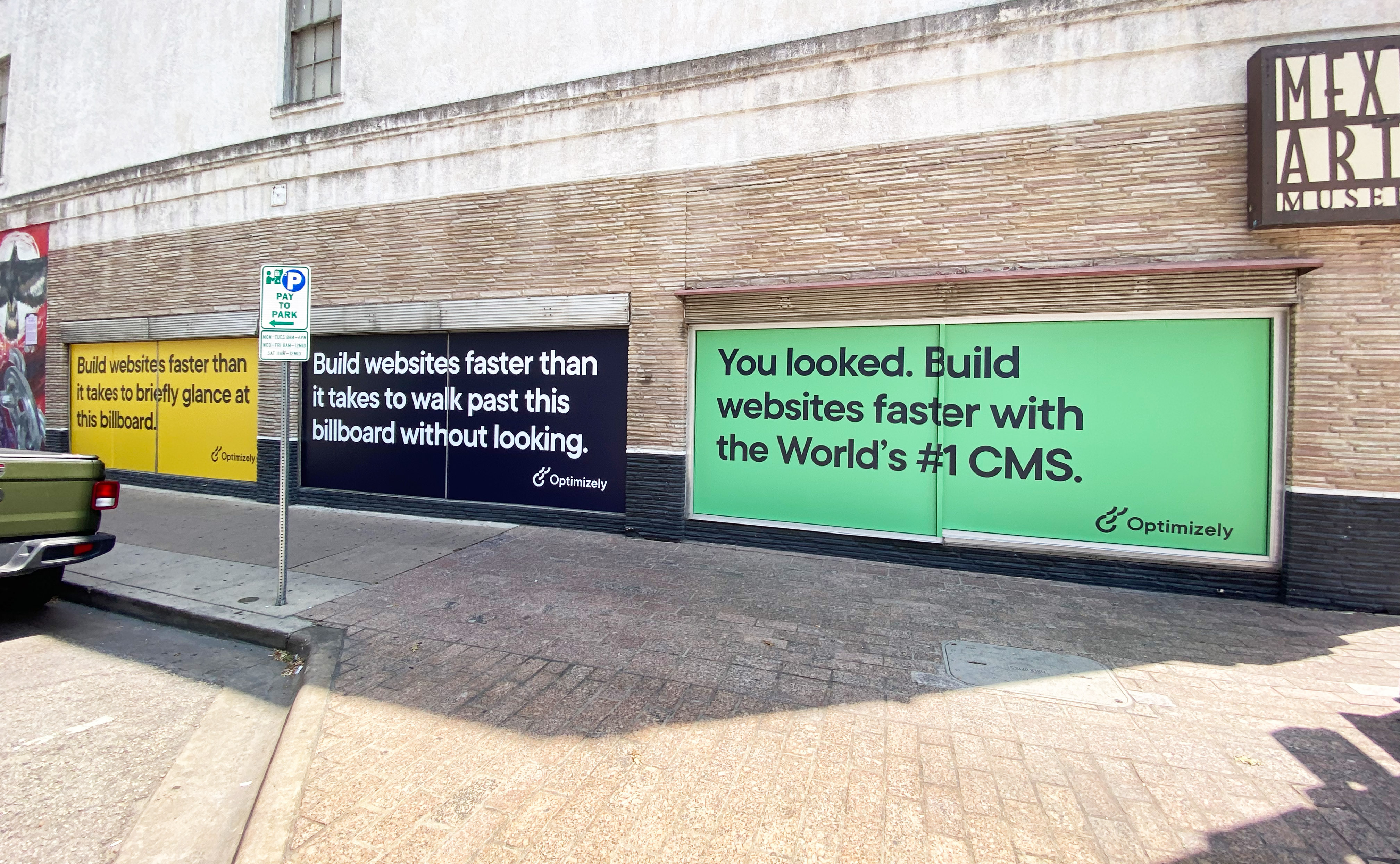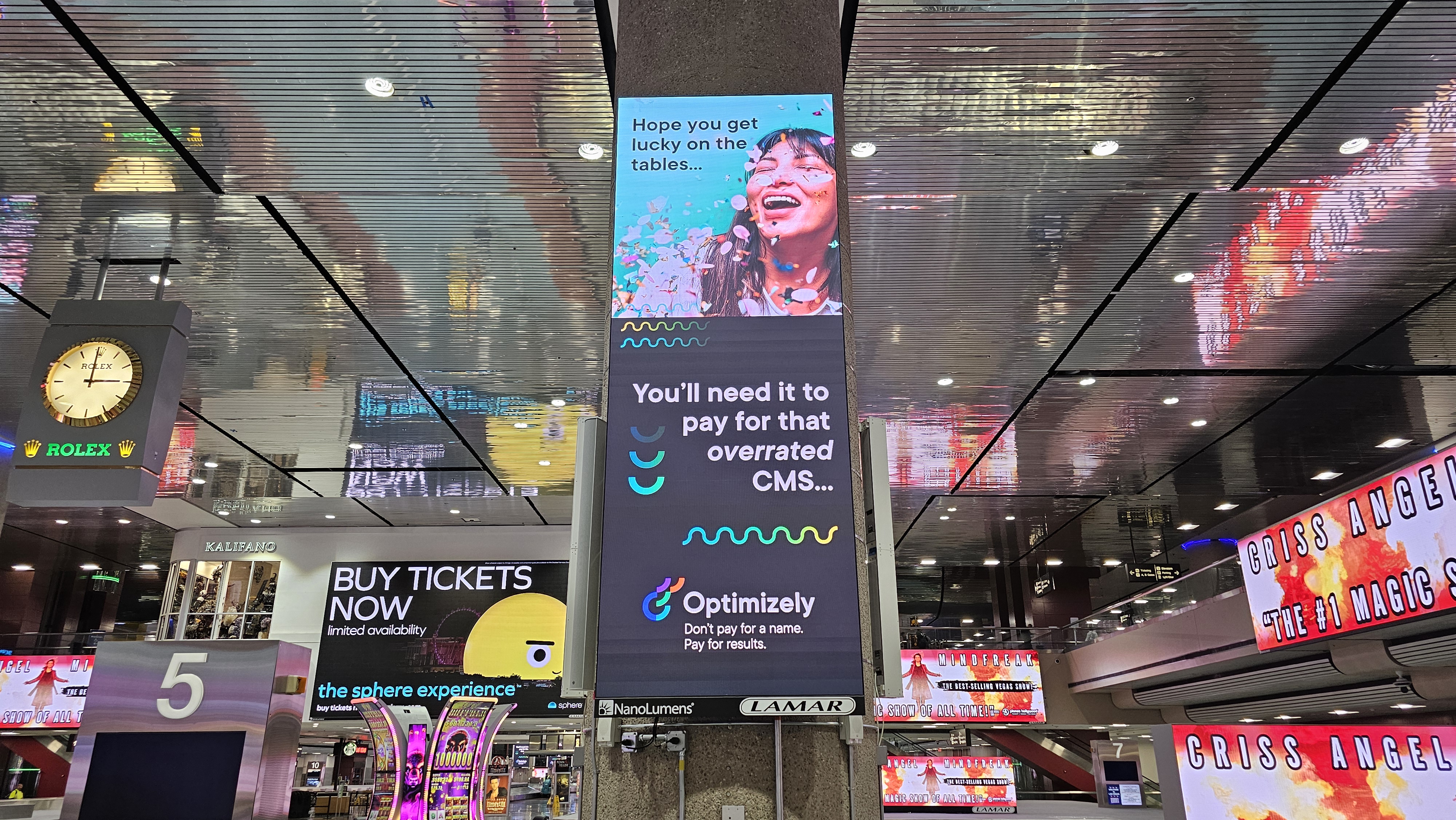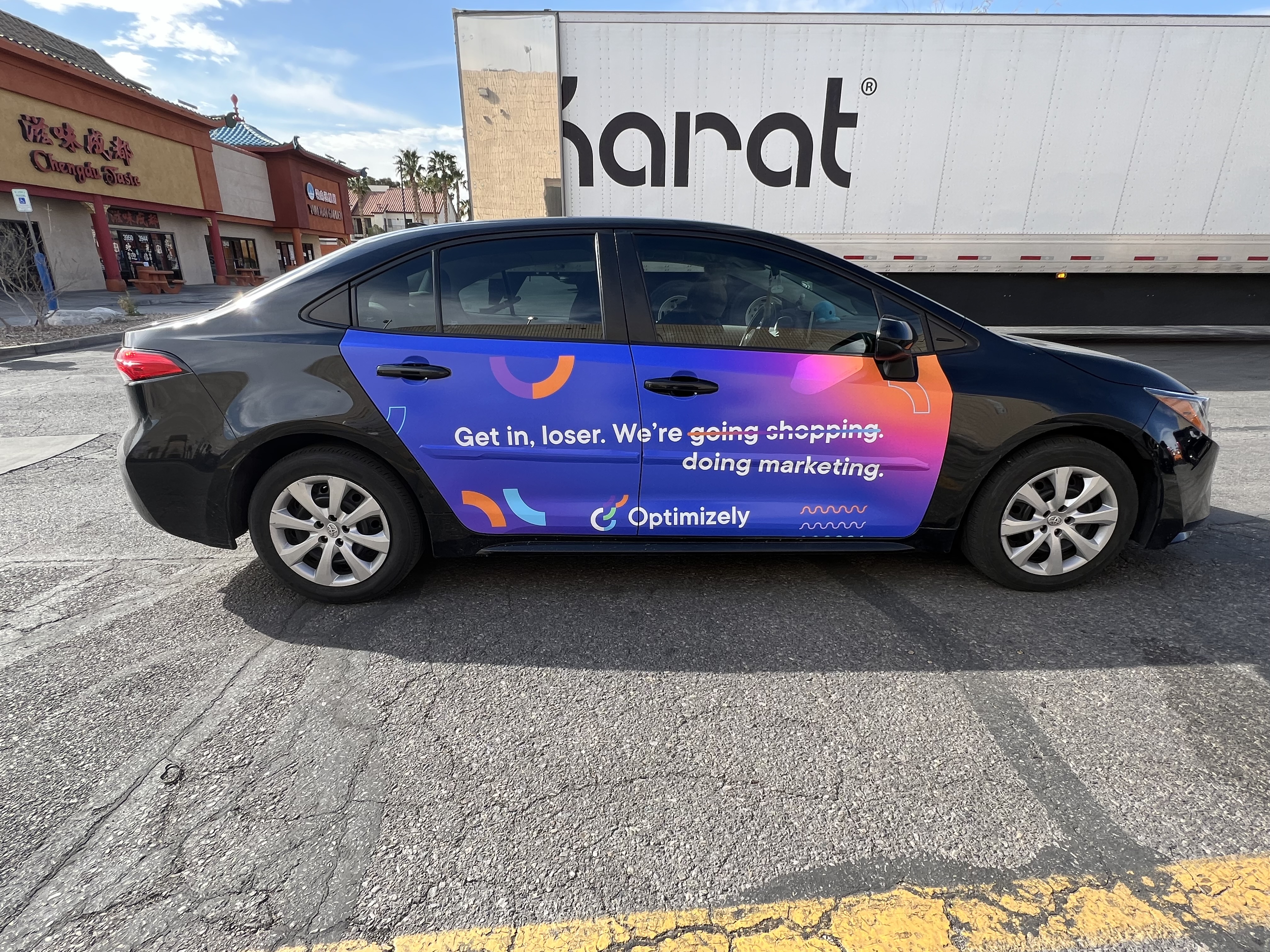
There's this illusion that out-of-home advertising is this old-fashioned, super expensive, impossible to measure, and generally difficult marketing tactic.
Spoiler alert: I think you're wrong, and I want to make you change your mind.
Why? Because OOH doesn't deserve this bad rep. In reality, it's not that hard to work and it can be an awesome value driver for your brand.
How I got comfortable with OOH marketing
Like most New Yorkers, I take public transit regularly. It’s the best way to get from point A to point B in the city. But from my point of view, the commute is also a great way to gather a quick snapshot of the state of marketing.
On the train, you see two worlds colliding — the physical, out-of-home campaigns lining the train walls around you and the digital ads your fellow commuters scroll through on their phones. I’ve spent my career building tools for digital marketers, so I’m no stranger to the latter.
Before I settled into my previous role as CMO, I would have told you that the ads on my fellow passengers’ phones were superior — they’re data-backed, easy to target and plugged into a digital ecosystem that moves them through a specific brand journey. But over the last year, I’ve grown increasingly curious about the potential of out-of-home.
Now, having launched three out-of-home campaigns for Optimizely over the past year, I’ve realized that out-of-home marketing still has a place in the arsenal of a modern CMO — especially in B2B marketing if you do it right.

But I get it, your hesitance as a CMO is understandable
There’s no shortage of perceptions holding out-of-home back, or reasons why CMOs might balk at the idea, especially those of B2B brands.
Over the last decade, visible out-of-home campaigns were almost always from B2C brands. If you’ve ridden public transportation recently, you know the kind I’m talking about. Mattress brands with Where’s Waldo-type searches or pharmacy startups that use logic puzzles for advertisements are perfect for capturing drifting eyes on long delays. Or, specifically here in New York City, hyper-relatable ad copy about roommates, takeout, and bagels.
But these formats aren’t intuitively obvious when planning B2B marketing. Often, B2B brands are trying to reach a very specific audience, and industry jargon doesn’t always translate nicely into word games on public transit.
For B2B marketers who are used to measuring everything, digital marketing vs. physical is an unfair fight. Data backs the best digital marketing. Targeting on most channels is stellar. You can iterate and test different versions of the same ad, experimenting with voices, channels, mediums, and audiences, and then extrapolating a concrete, stat-backed ROI from each interaction.
But marketing isn’t about playing it safe, and something told me not to ignore out-of-home as I took the reins as CMO.
How Optimizely took on OOH in 2024
Last year, my team launched its first out-of-home campaign. Our “Move Fast and Make Things” campaign put up billboards and transit ads in New York and San Francisco. The campaign was small and scrappy — we weren’t sold on out-of-home just yet, so keeping it relatively lean was important.

However, we knew we had to break through the noise of the more eye-catching and consumer-focused ads that would surround ours. I’m not the first to say it, but B2B does not mean boring to boring.
Optimizely is a 8x Leader in CMPs!
We opted for a new approach entirely to avoid the jargon-y, coded messages that too often complicate a B2B campaign. The campaign zeroed in with humor on universal annoyances facing innovators: you know, like those end-of-day calls from your boss about a GREAT idea that you should implement ASAP.
It turns out that marketing like that doesn’t need to be so hard…or so serious. Our initial campaign was a success and the reception was positive, giving us the confidence to try something even less serious.

Earlier this year, we launched an out-of-home campaign in the Las Vegas airport, timed around Adobe Summit 2024. We knew we had a golden opportunity – thousands of marketers from our ideal customer pool coming through a small location (Vegas airport) for a specific period of time (5 days). We quickly bought out every digital display around the baggage claims (50+ screens, running our ad 100% of the time). The targeting was almost as good as digital.
Turning up the heat, we opted for a spicy approach: the ads took a few playful shots at our competitor. “Hope you get lucky on the tables… you’ll need it to pay for that overrated CMS.” And immediately, the conference buzzed about the activation. The campaign was the first thing people saw arriving in the city, leaving a lasting impact throughout the weekend.
Remember: Surprising advertising delivers surprising results
After our fun out-of-home campaigns launched, I mostly heard praise from my old-school colleagues who work in traditional industries like healthcare and law. Working against the grain works, and people are hungry for real-world B2B advertising that demands attention.
The numbers support this hunch. A recent report released by the Cannes Festival stated that emotional B2B marketers are 20% more likely to be trusted as brands are 5.3x more likely to be users’ first choice. The stats are on out-of-home’s side these days, too. Physical ads like a billboard overlooking a highway can have a second life on social media and reach far larger audiences than passing drivers.
According to a joint study by the Out of Home Advertising Association of America and Harris Poll study, 82% of TikTok users frequently notice OOH ads in content while using the platform, with Instagram users close at 81%.
Yes, out-of-home results are more anecdotal and qualitative than a digital marketing campaign, but we need to be comfortable with some uncertainty. There’s some nuance to that, too.

Even for our relatively small out-of-home launches, we found they can be backed with intelligent analytics. We can run tests digitally, examine traffic lifts in certain areas vs a control group, and implement mobile remarketing to people who walk near our ads.
Now, whenever we do out of home, we also personalize our home page so that traffic from those cities gets a brand level message and a connected visual experience. It also helps us measure lift in traffic or engagement from cities where we’re running campaigns out in the world.
The bottom line: CMOs, we’ve been thinking about out-of-home all wrong. Ultimately, out-of-home is a leap of faith, and you must believe that building buzz for your brand in the real world matters.
As one of my favorite sayings go: “I’ll be interested, if you’ll be interesting.” That’s what your audience is thinking. So, make sure you have some fun with it and be memorable!


